Yoga for Athletes: Enhance Performance and Prevent Injuries
Yoga has long been celebrated for its myriad benefits, from promoting flexibility to enhancing mental clarity. But did you know […]
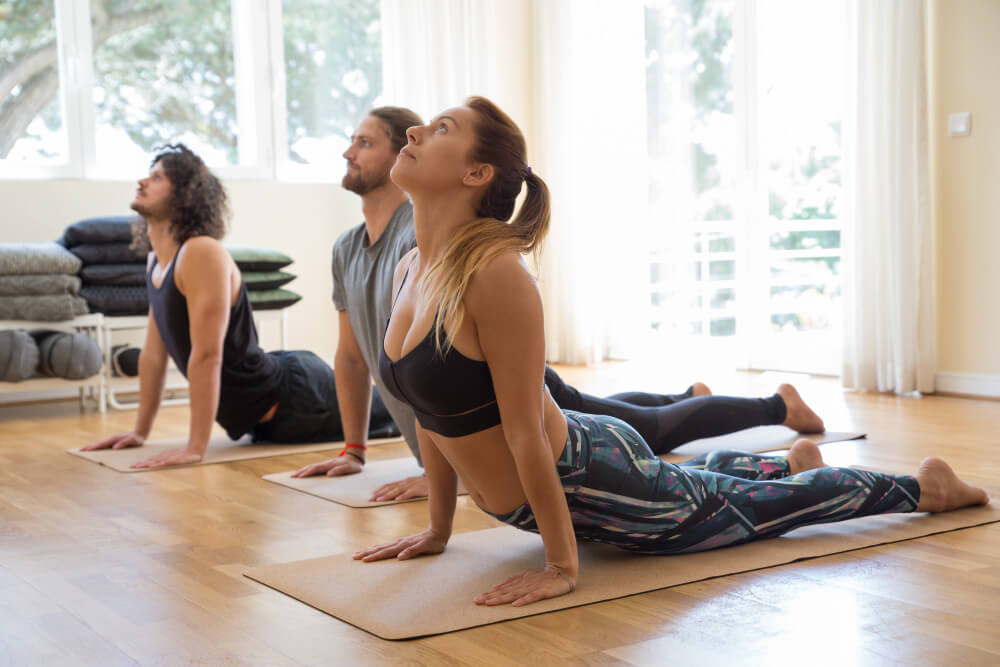
Yoga has long been celebrated for its myriad benefits, from promoting flexibility to enhancing mental clarity. But did you know that it can also significantly boost athletic performance? Incorporating yoga into your training regimen can be a game-changer, offering a range of advantages that can help you excel in your chosen sport. Let’s delve into the benefits of yoga for athletes across various disciplines.
Enhanced Flexibility and Range of Motion
One of the most obvious benefits of yoga for athletes is improved flexibility. Through a series of dynamic stretches and poses, yoga helps to lengthen and loosen tight muscles, allowing for greater range of motion in joints. This increased flexibility can translate to better performance in sports that require agility, such as basketball, soccer, or martial arts. By improving flexibility, athletes can move more freely and efficiently, reducing the risk of injury and enhancing overall performance.
Improved Strength and Stability
While yoga is often associated with flexibility, it also builds strength and stability in muscles throughout the body. Many yoga poses require significant engagement of core muscles, as well as smaller stabilizing muscles that are often overlooked in traditional strength training routines. By incorporating yoga into their workouts, athletes can develop a more balanced and resilient physique, which can enhance performance and reduce the likelihood of injuries caused by muscular imbalances.
Better Balance and Coordination
Yoga places a strong emphasis on balance and coordination, both of which are essential for athletic success. Many yoga poses require practitioners to find stability in challenging positions, often on one leg or with limbs extended. By practicing these balancing poses regularly, athletes can improve their proprioception and spatial awareness, allowing them to move more confidently and efficiently in their sport of choice.
Injury Prevention and Rehabilitation
In addition to enhancing physical performance, yoga can also play a crucial role in injury prevention and rehabilitation. The gentle, low-impact nature of many yoga poses makes it an ideal form of exercise for athletes recovering from injuries or dealing with chronic pain. Yoga can help to restore mobility, alleviate tightness, and strengthen muscles without placing excessive strain on injured tissues. Additionally, the focus on breath awareness and mindfulness in yoga can help athletes manage stress and anxiety, which are common contributors to both physical and mental injuries.
Mind-Body Connection
One of the most profound benefits of yoga for athletes is its ability to cultivate a strong mind-body connection. Through mindful movement and breath awareness, yoga encourages practitioners to stay present and focused in the moment, which can be invaluable during competition. By learning to quiet the mind and tune into the body’s sensations, athletes can better regulate their energy levels, manage discomfort, and maintain peak performance even under pressure.
Enhancing Performance Through Mindfulness
Yoga isn’t just about physical poses; it’s also a practice of mindfulness and presence. By incorporating elements of meditation and breathwork, athletes can sharpen their focus, improve mental resilience, and perform at their best, even in high-pressure situations.
Enhancing Recovery and Restorative Practices
Recovery is an integral part of any training program, and yoga offers a range of practices that promote relaxation, restoration, and recovery. Gentle yoga sequences, restorative poses, and relaxation techniques help athletes unwind, reduce muscle soreness, and promote better sleep, allowing the body to heal and regenerate more efficiently between workouts or competitions.
Integrating Yoga into Cross-Training Regimens
Yoga complements other forms of training seamlessly, making it an ideal addition to any athlete’s cross-training regimen. Whether you’re a runner looking to improve flexibility, a weightlifter seeking better balance, or a cyclist aiming to alleviate tightness, incorporating yoga into your routine can enhance overall performance and well-being, leading to greater success and longevity in your athletic pursuits.
Top 10 Yoga Poses for Athletes
1. Downward Facing Dog (Adho Mukha Svanasana)
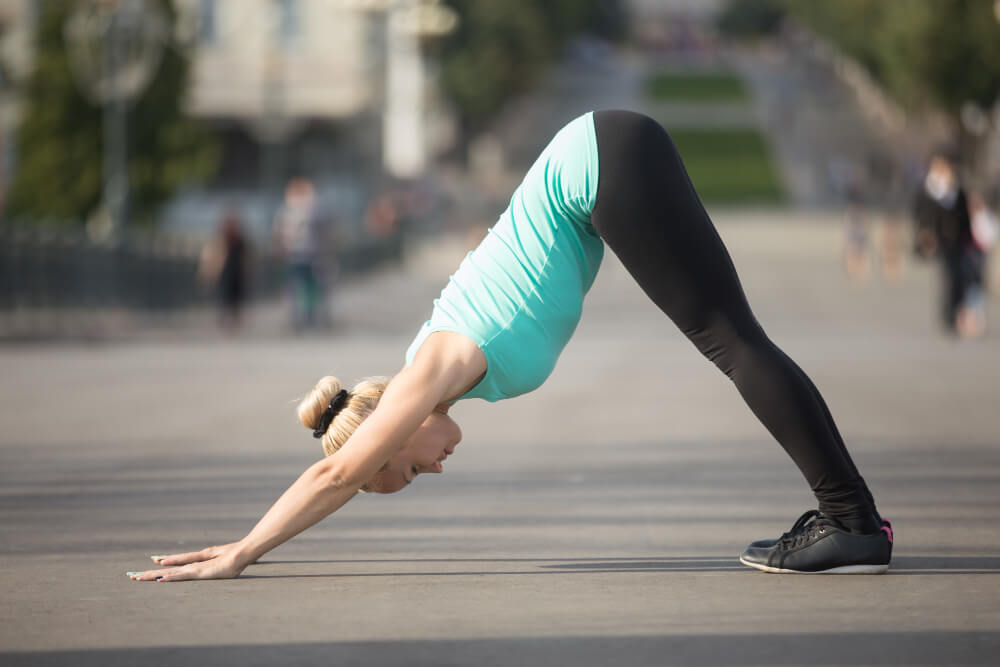
This iconic yoga pose is a staple in many yoga sequences due to its myriad benefits. Downward Facing Dog stretches the entire back body, including the hamstrings, calves, shoulders, and spine. It also strengthens the arms, shoulders, and core muscles. Athletes can use this pose to improve overall flexibility, relieve tension in the back and legs, and enhance upper body strength, making it particularly beneficial for sports that involve running, jumping, or upper body strength.
Start on hands and knees. Lift hips toward the ceiling, straightening arms and legs. Keep heels grounded and spine long. Hold for several breaths.2. Warrior II (Virabhadrasana II)
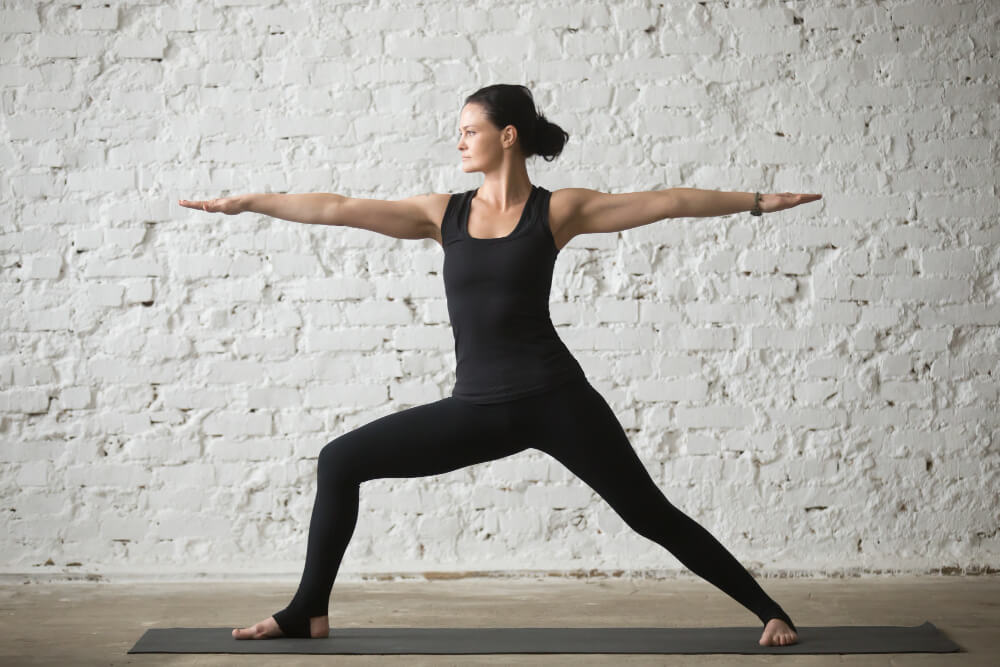
Warrior II is a dynamic standing pose that targets the legs, hips, and core muscles. It helps to build strength and stability in the lower body while also opening up the hips and chest. This pose is excellent for athletes who require strong and stable legs, such as runners, cyclists, or basketball players. It also encourages proper alignment and focus, essential for maintaining balance and coordination during physical activity.
Begin in a standing position with feet wide apart. Turn right foot out 90 degrees, left foot slightly inward. Bend right knee to 90 degrees, arms extended parallel to the floor. Hold, gazing over right fingertips, then switch sides.3. Triangle Pose (Trikonasana)
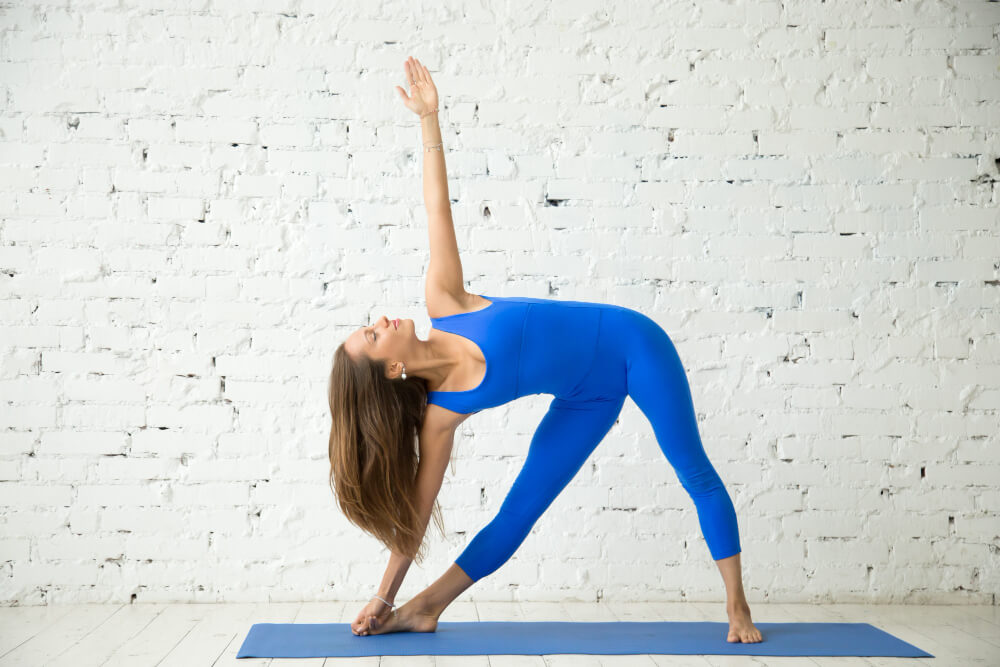
Triangle Pose is a lateral stretch that engages the legs, core, and spine. It provides a deep stretch to the hamstrings, groins, hips, and spine while also strengthening the legs and core muscles. Triangle Pose improves overall flexibility, enhances hip mobility, and relieves tension in the lower back, making it beneficial for athletes involved in sports that require lateral movement, such as tennis, soccer, or skiing.
Start standing, feet wide apart. Turn right foot out, left foot slightly inward. Reach right hand down to shin, ankle, or floor. Extend left arm up, keeping torso extended. Hold, then switch sides.4. Bridge Pose (Setu Bandhasana)
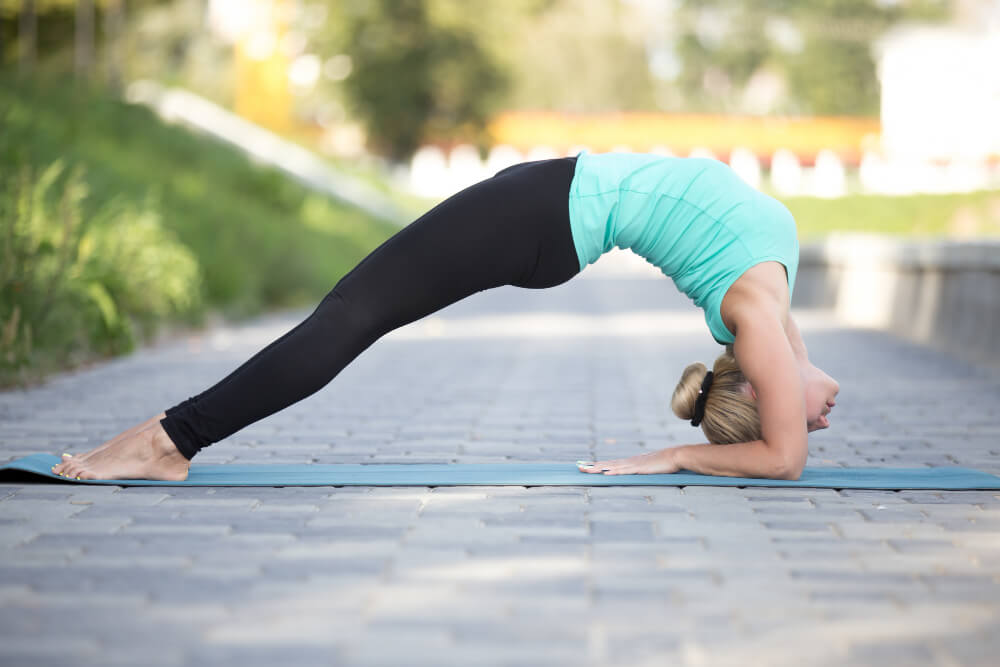
Bridge Pose is a backbend that targets the spine, chest, shoulders, and hip flexors. It strengthens the back muscles, opens up the chest and shoulders, and stretches the front of the body. Bridge Pose also helps to alleviate tightness in the hip flexors and lower back, making it an excellent pose for athletes who spend long hours sitting or engaging in repetitive movements, such as cyclists or office workers.
Lie on back, knees bent, feet hip-width apart. Press into feet, lift hips toward ceiling. Interlace fingers under back, roll shoulders underneath. Hold, then release slowly.5. Pigeon Pose (Eka Pada Rajakapotasana)
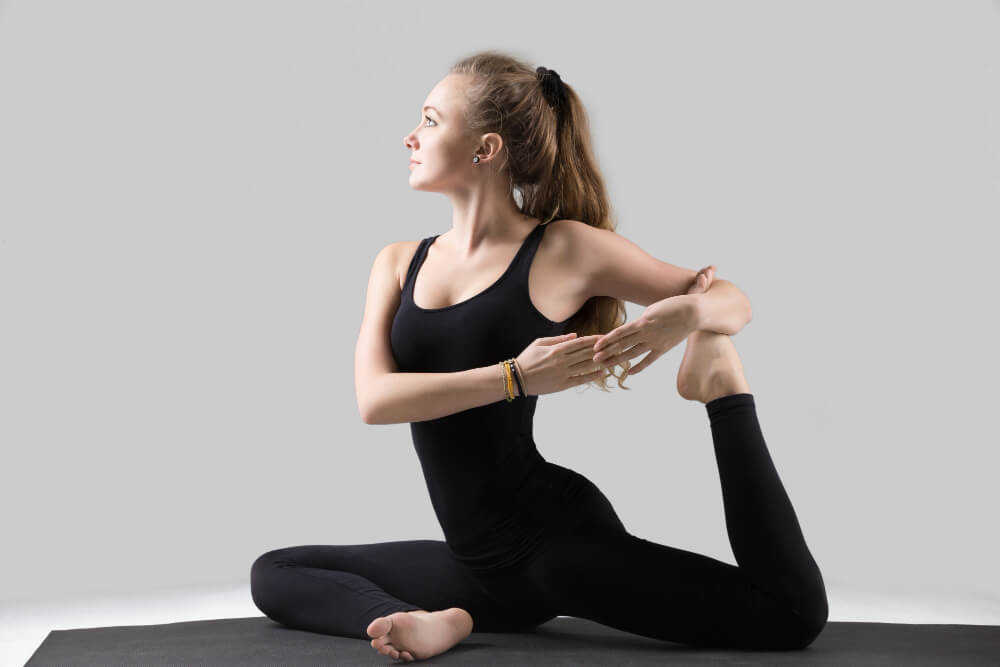
Pigeon Pose is a deep hip opener that targets the hip flexors, glutes, and piriformis muscles. It helps to release tension and tightness in the hips and lower back, which is beneficial for athletes who engage in activities that put strain on the hips, such as running, cycling, or weightlifting. Pigeon Pose also stretches the thighs, groins, and psoas muscles, promoting greater flexibility and range of motion in the hips.
Start in tabletop position. Bring right knee toward right wrist, slide left leg back. Square hips, lower torso over right leg. Hold, then switch sides.6. Standing Forward Fold (Uttanasana)
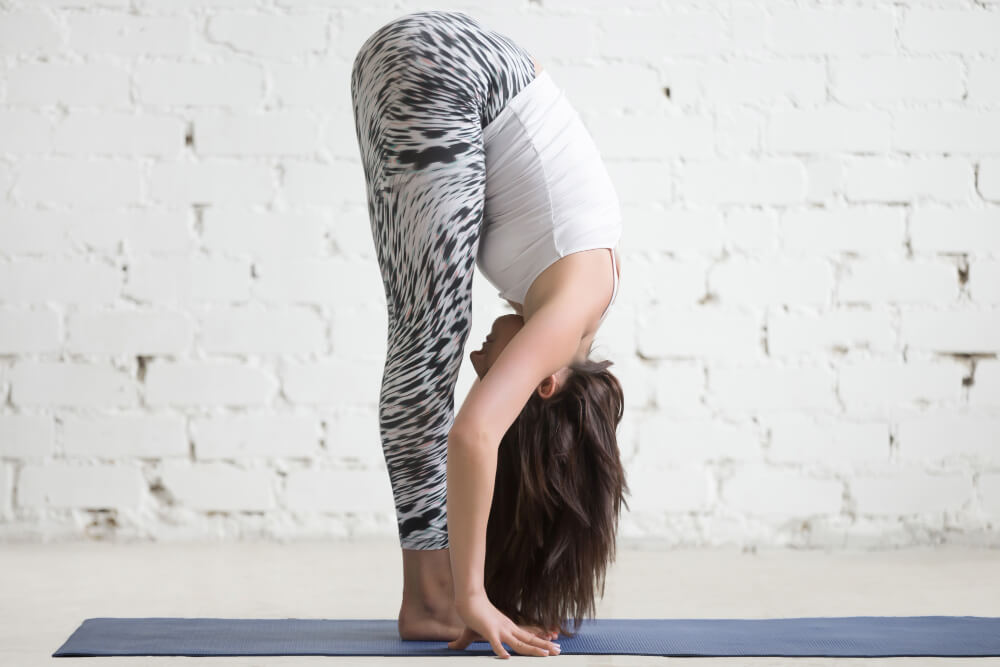
Standing Forward Fold is a relaxing pose that stretches the entire back body, including the hamstrings, calves, spine, and shoulders. It helps to release tension in the back and neck, improve circulation, and calm the mind. Standing Forward Fold also encourages a gentle inversion, allowing blood to flow more easily to the brain, which can enhance mental clarity and focus, making it beneficial for athletes seeking to improve their concentration and mental resilience.
Stand with feet hip-width apart. Hinge forward from hips, keeping spine long. Allow upper body to hang over legs. Hold, then return to standing.7. Plank Pose (Phalakasana)
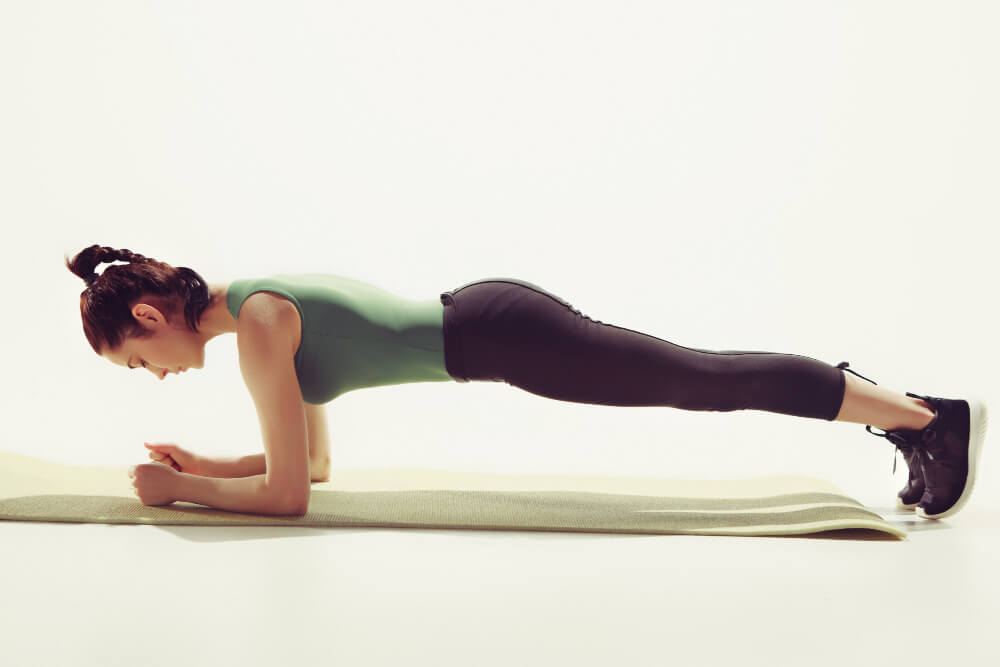
Plank Pose is a fundamental yoga pose that strengthens the core, arms, shoulders, and legs. It helps to build stability and endurance in the abdominal muscles, which is essential for maintaining proper posture and preventing injury during physical activity. Plank Pose also improves overall body awareness and alignment, making it beneficial for athletes who require a strong and stable core, such as swimmers, climbers, or martial artists.
Start in push-up position. Hands shoulder-width apart, wrists under shoulders. Extend legs straight, engage core. Hold, then lower or push back up.8. Tree Pose (Vrksasana)
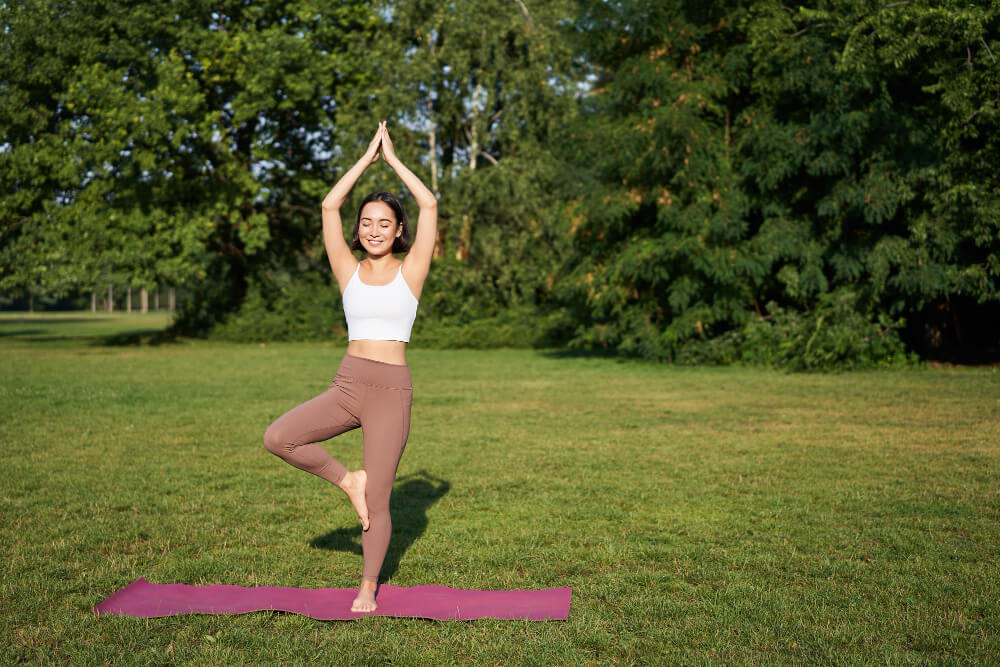
Tree Pose is a balancing pose that strengthens the legs, ankles, and core muscles while also improving balance and focus. It encourages proper alignment and stability throughout the body, helping athletes develop greater proprioception and spatial awareness. Tree Pose also promotes a sense of grounding and stability, which can be beneficial for athletes competing in high-pressure situations, such as gymnasts, dancers, or figure skaters.
Stand tall, weight on left foot. Lift right foot, place sole against inner left thigh. Press foot into leg, hands to heart center or overhead. Hold, then switch sides.9. Seated Forward Bend (Paschimottanasana)
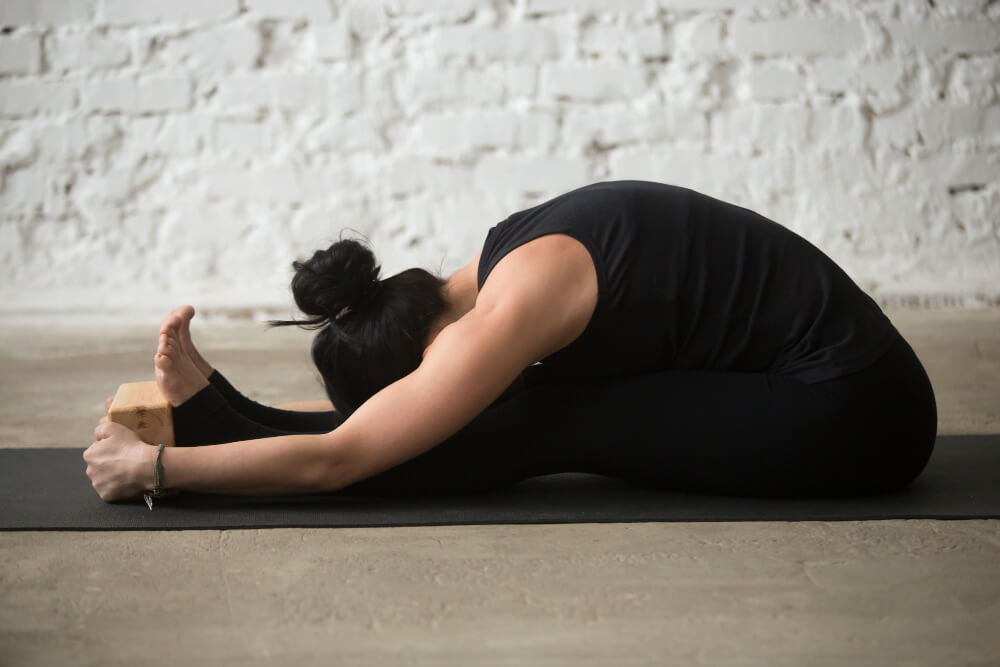
Seated Forward Bend is a calming pose that stretches the entire back body, including the spine, hamstrings, and calves. It helps to release tension in the back and neck, improve flexibility in the posterior chain, and promote relaxation and introspection. Seated Forward Bend also stimulates the digestive organs and quiets the mind, making it an excellent pose for athletes seeking to unwind and recover after intense training sessions or competitions.
Sit with legs extended in front. Flex feet, engage quadriceps. Hinge forward from hips, reaching for shins, ankles, or feet. Hold, then release slowly.10. Child’s Pose (Balasana)
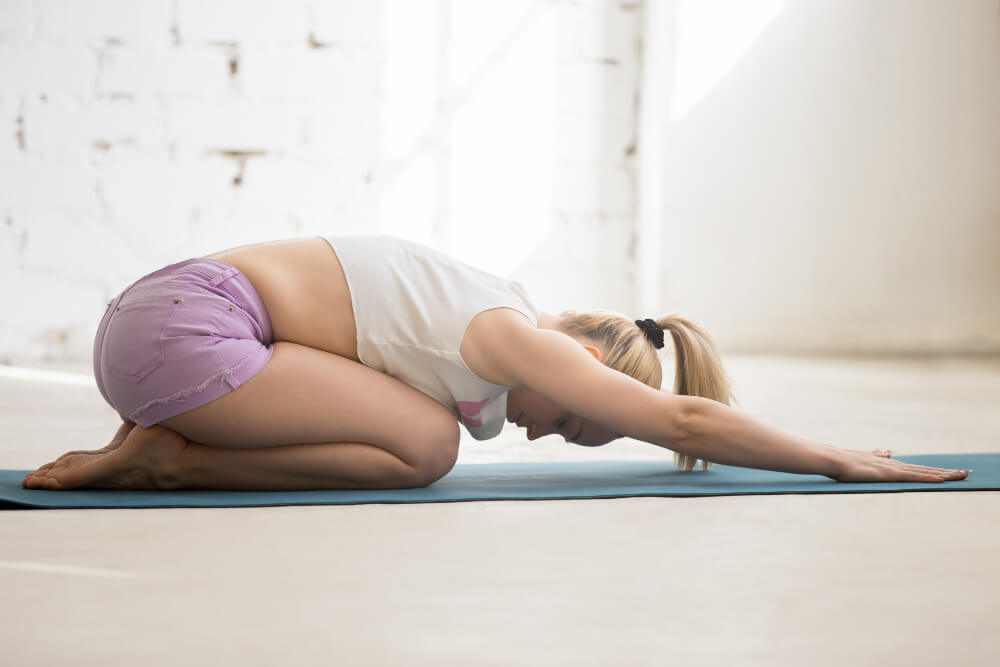
Child’s Pose is a restorative pose that promotes relaxation, deep breathing, and gentle stretching of the spine, hips, and thighs. It helps to release tension in the back, shoulders, and neck, while also calming the nervous system and reducing stress and anxiety. Child’s Pose is an ideal pose for athletes to practice during cooldowns or as part of a post-workout stretching routine, allowing the body to relax and rejuvenate after exertion.
Begin on hands and knees. Sit back on heels, big toes touching, knees wide. Walk hands forward, lower torso toward floor.Rest forehead on mat, arms extended or alongside body. Hold, then return to seated position.Conclusion
Trying this yoga for athletes can be immensely beneficial for overall performance and well-being during training.From improving flexibility and strength to enhancing mental focus and reducing the risk of injuries, yoga offers a holistic approach to athletic training. By dedicating time to practice these poses regularly, athletes can cultivate greater body awareness, balance, and resilience, which can translate to improved performance on the field, court, or track. Whether used as a standalone practice or integrated into cross-training routines, yoga provides athletes with valuable tools to optimize their physical and mental health, helping them reach their full potential in their chosen sport. Visit our YouTube channel to find out more information on yoga and meditation.

 Tekef
Tekef 































